In the frigid depths of winter, when temperatures plummet well below freezing, most animals face a stark choice: migrate, hibernate, or perish. But in the fascinating world of natural adaptations, one remarkable creature defies these limitations with an almost supernatural ability. The wood frog (Lithobates sylvaticus) can actually freeze solid—becoming a frog-shaped ice block for weeks—and then thaw back to life when spring arrives. This extraordinary survival mechanism, known as cryobiosis, represents one of nature’s most remarkable adaptations to extreme environments. As climate change threatens delicate ecosystems, understanding these unique survival strategies becomes increasingly important for conservation efforts and potential applications in human medicine.
The Remarkable Wood Frog: Nature’s Freeze-Resistant Wonder

The wood frog is a small amphibian native to North America, ranging from Alaska and Canada down to the southern Appalachians. Growing to just 3-7 centimeters in length, these unassuming creatures have a distinctive dark eye mask and can vary in color from tan to dark brown. While they might appear ordinary at first glance, wood frogs possess extraordinary physiological adaptations that allow them to survive in regions where winter temperatures regularly drop below -20°C (-4°F).
What makes wood frogs truly special is their geographic range—they are the only frog species found north of the Arctic Circle. This remarkable distribution is possible precisely because of their freeze-tolerance ability, which allows them to survive in environments where no other frog could endure the harsh winter conditions. Unlike many other cold-climate amphibians that avoid freezing by burrowing deep below the frost line, wood frogs may spend winter just beneath leaf litter or shallow soil, where they inevitably freeze solid as temperatures drop.
The Science Behind Freezing Solid

When winter approaches and temperatures begin to drop, the wood frog initiates a remarkable series of physiological changes. As the first ice crystals form on their skin, it triggers the frogs to start pumping large amounts of glucose (a sugar) and urea into their bloodstream and vital organs. These compounds act as natural cryoprotectants—essentially biological antifreeze—that protect cells from damage during freezing. The concentration of glucose in their tissues can increase up to 200-fold compared to normal levels, reaching concentrations that would cause diabetes in humans.
As the temperature continues to drop, up to 65-70% of the water in the frog’s body freezes solid. Ice forms in the body cavity, beneath the skin, and between muscle layers. The heart stops beating, breathing ceases, and all measurable metabolic activity comes to a halt. From all outward appearances, the frog is dead—hard as a rock, no heartbeat, no brain activity, and completely unresponsive. Yet remarkably, at the cellular level, the vital organs remain protected by the concentrated glucose solution, preventing the lethal formation of ice crystals within the cells themselves.
The Miraculous Thawing Process

When spring arrives and temperatures rise, the seemingly miraculous resurrection begins. The thawing process starts from the inside out, with the heart and brain being among the first organs to regain function. Within hours of thawing, the frog’s heart begins beating again, circulating blood and oxygen to the tissues. The process of returning to normal biological function takes approximately 24 hours, though this varies depending on environmental conditions and the individual frog.
Scientists have documented that these frogs can endure multiple freeze-thaw cycles within a single winter, a particularly valuable adaptation in regions with fluctuating spring temperatures. Within minutes of thawing, the frogs begin to show muscle twitches, and within hours they can hop away as if nothing extraordinary had happened. This remarkable recovery demonstrates the effectiveness of their cellular protection mechanisms and the resilience of their organs after extended periods of suspended animation.
The Limits of Freeze Tolerance

Despite their impressive abilities, wood frogs do have limits to their freeze tolerance. Research has shown that they can survive with approximately two-thirds of their body water frozen, but complete freezing would be fatal. Additionally, they can only survive temperatures down to about -8°C (18°F) in the wild, though laboratory specimens have survived brief exposure to temperatures as low as -16°C (3°F). The duration of freezing also matters—wood frogs typically remain frozen for 1-3 months in natural conditions.
Another crucial limitation is the frequency of freeze-thaw cycles. While wood frogs can survive multiple freezing events in a single winter, each cycle requires significant energy expenditure to produce the necessary glucose. Too many cycles can deplete their energy reserves, potentially leading to death. Climate change is of particular concern, as increasingly erratic winter temperatures may force frogs through more freeze-thaw cycles than they can physiologically handle, threatening their survival despite their remarkable adaptation.
Other Freeze-Tolerant Species

While the wood frog is perhaps the most famous freeze-tolerant vertebrate, it is not alone in this remarkable ability. Several other North American frog species, including spring peepers (Pseudacris crucifer), chorus frogs (Pseudacris triseriata), and gray treefrogs (Hyla versicolor), can also survive partial freezing, though generally not to the same extent as wood frogs. These species employ similar mechanisms of cryoprotection using glucose or glycerol to protect their cells.
Beyond amphibians, certain insects and other invertebrates display even more impressive freeze tolerance. The Arctic woolly bear caterpillar (Gynaephora groenlandica) can survive freezing at temperatures as low as -70°C (-94°F) and may remain frozen for up to 10 months of the year. Some species of Alaskan beetles produce antifreeze proteins that prevent ice formation within their bodies. These diverse examples illustrate how freeze tolerance has evolved independently in multiple lineages as an adaptation to extreme cold environments.
The Cellular Mechanisms of Survival
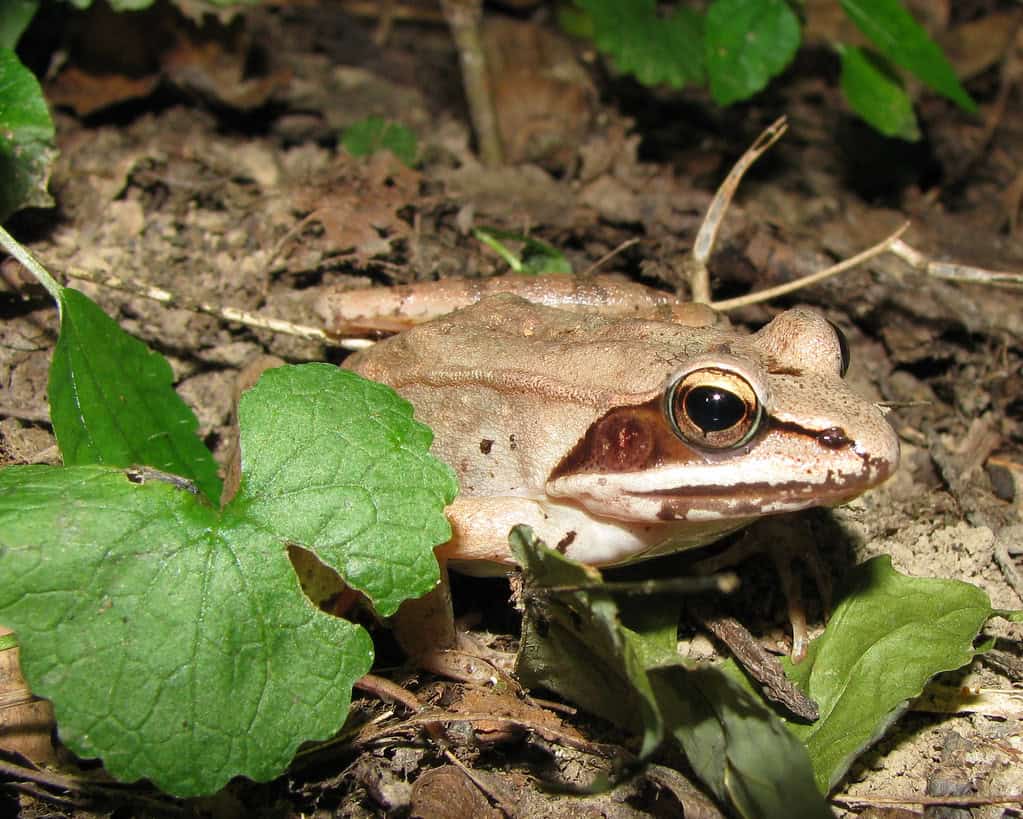
The wood frog’s freeze tolerance relies on sophisticated cellular mechanisms that scientists continue to study. During freezing, cells face multiple threats: physical damage from ice crystals, extreme dehydration as water leaves cells to form extracellular ice, and the concentration of potentially toxic solutes within the remaining unfrozen cell water. The high glucose concentrations protect against these dangers by stabilizing cell membranes, replacing water inside cells to prevent collapse, and lowering the freezing point of the remaining cellular fluid.
Research has also revealed that wood frogs produce special protective proteins during freezing, including heat shock proteins and ice-binding proteins. Additionally, they undergo controlled cell volume reduction, allowing their cells to shrink in an orderly fashion as water leaves to form ice elsewhere in the body. Perhaps most remarkably, they can endure extended periods without oxygen (anoxia) and the subsequent oxidative stress during thawing—conditions that would cause severe damage to most animals’ tissues, particularly the brain.
Medical and Scientific Applications

The wood frog’s extraordinary ability to survive freezing has attracted significant attention from medical researchers. Understanding how these animals prevent cell damage during freezing could lead to breakthroughs in cryopreservation techniques for human organs. Currently, donated organs remain viable for only hours before transplantation, severely limiting the geographic range over which organs can be shared. Improved preservation methods based on the wood frog’s natural cryoprotectants could potentially extend this timeframe to days or even months.
Scientists are also investigating applications in trauma medicine. The ability to temporarily reduce metabolic demands in critically injured patients could extend the window for life-saving interventions. Some of the molecular mechanisms used by wood frogs to protect cells during oxygen deprivation might inform treatments for stroke or heart attack victims. Additionally, understanding how wood frogs prevent cell death during extreme stress could provide insights for treating degenerative diseases or developing new preservation methods for vaccines and biological samples.
Life Cycle and Reproduction

Wood frogs have adapted their entire life cycle to maximize survival in cold northern environments. They are among the earliest amphibians to emerge in spring, often breeding while ice still partially covers their breeding ponds. This early reproduction is possible precisely because of their freeze tolerance, allowing them to be active at temperatures that would be lethal to other frog species. The explosive breeding season is brief but productive, with females laying clutches of 1,000-3,000 eggs that develop rapidly in the cold water.
The tadpoles develop quickly, completing metamorphosis within 6-15 weeks, depending on water temperature and food availability. This accelerated development ensures that the young frogs have sufficient time to feed and store energy before the next winter arrives. Unlike many other frog species that breed in the same ponds year after year, wood frogs are more nomadic, spending much of their adult life in woodlands rather than near water. They return to ephemeral woodland pools each spring to breed, often showing remarkable fidelity to their birth sites despite traveling hundreds of meters through forest habitats.
Conservation Status and Threats
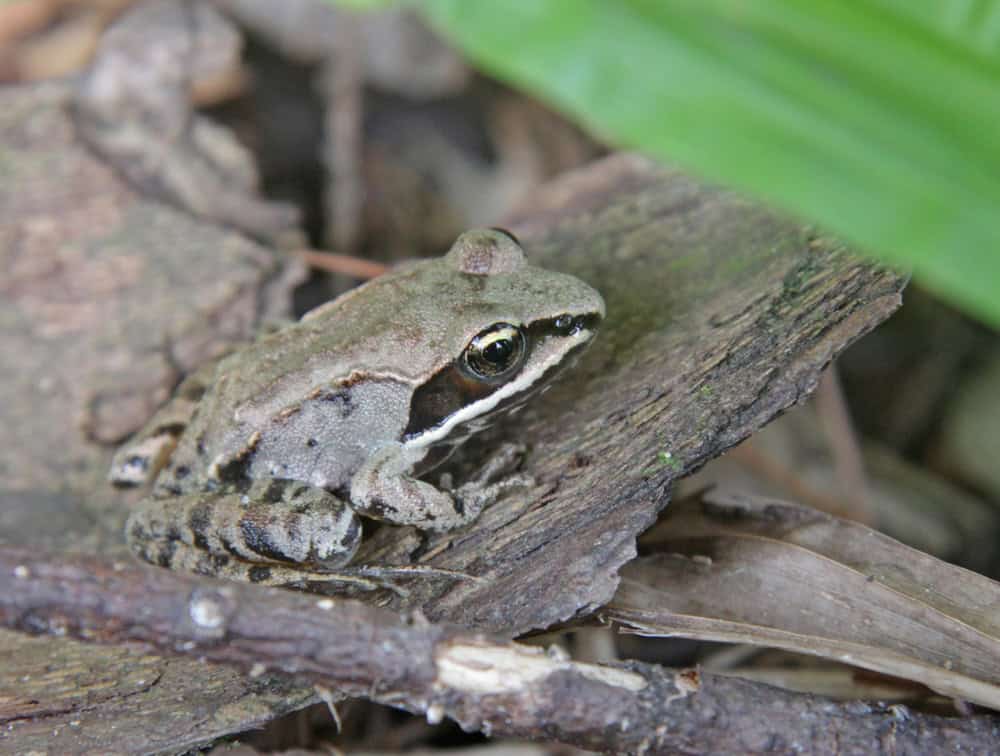
Despite their remarkable cold-hardiness, wood frogs face numerous threats in the modern world. Habitat loss due to deforestation and urban development has fragmented many populations. The temporary woodland pools they require for breeding are often not protected by wetland regulations due to their seasonal nature, making them vulnerable to drainage and development. Road mortality is another significant threat, as wood frogs must often cross roads during their spring migrations to breeding pools.
Climate change presents a particular challenge for wood frogs. While their freeze tolerance might suggest they would benefit from warmer winters, the increased frequency of freeze-thaw cycles can be detrimental. Additionally, altered precipitation patterns may affect the timing and duration of their breeding pools, potentially leading to reproductive failure if pools dry before tadpoles complete metamorphosis. Disease is another concern, with emerging pathogens like chytrid fungus affecting amphibian populations worldwide, though wood frogs have shown variable susceptibility in different regions.
Observing Wood Frogs in the Wild
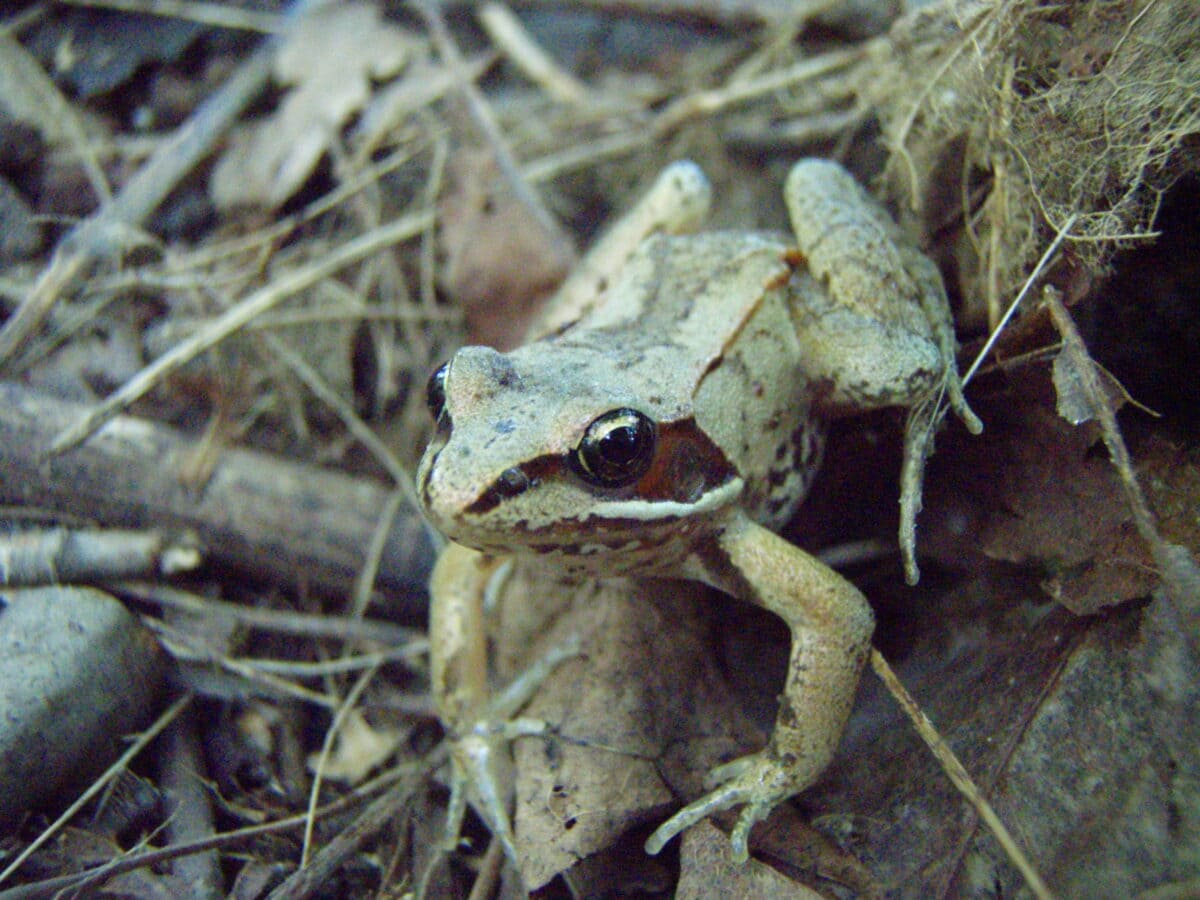
For nature enthusiasts hoping to observe these remarkable creatures, timing is crucial. The best opportunity comes in early spring when wood frogs emerge from freezing for their breeding season. Listen for their distinctive duck-like quacking calls, which can be heard even when temperatures are just a few degrees above freezing. Woodland vernal pools in deciduous forests are the prime locations, particularly on rainy nights in March and April throughout much of their range (timing varies by latitude).
Outside of breeding season, wood frogs can be difficult to find as they disperse into the forest floor. Their coloration provides excellent camouflage among leaf litter, and they typically remain motionless when threatened rather than jumping away like many other frog species. Patient observers might find them in moist woodland habitats, particularly after rain. Citizen science projects tracking wood frog breeding provide valuable data for researchers while offering opportunities for the public to engage with these fascinating amphibians and contribute to their conservation.
Evolutionary Origins of Freeze Tolerance
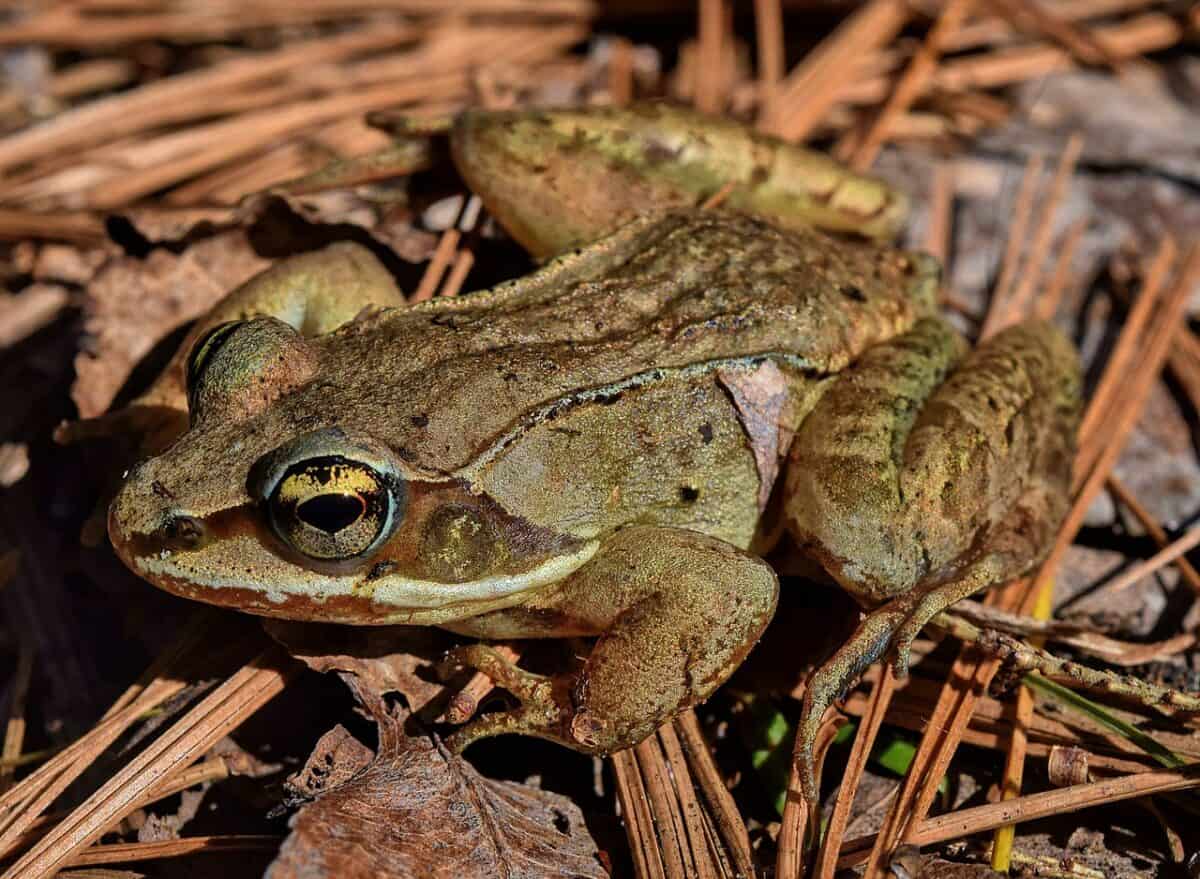
The evolution of freeze tolerance represents a fascinating chapter in adaptation biology. Researchers believe this trait evolved independently multiple times among different animal groups as a response to cold environments. For wood frogs, genetic evidence suggests their freeze tolerance evolved as northern populations expanded their range following the retreat of glaciers after the last ice age, approximately 11,000-16,000 years ago. This relatively recent adaptation demonstrates how quickly natural selection can favor extreme physiological traits when they provide survival advantages.
Comparative studies between wood frogs from different latitudes reveal that northern populations have enhanced freeze tolerance compared to their southern counterparts. Alaskan wood frogs, for instance, can survive longer freezing periods and lower temperatures than those from the southern United States. This geographic variation suggests that freeze tolerance continues to evolve and be refined through natural selection, with the most extreme adaptations appearing in populations facing the harshest winter conditions. The wood frog’s success story demonstrates the remarkable capacity of life to find solutions to environmental challenges.
The Frozen Miracle: Understanding Nature’s Cryobiological Wonder
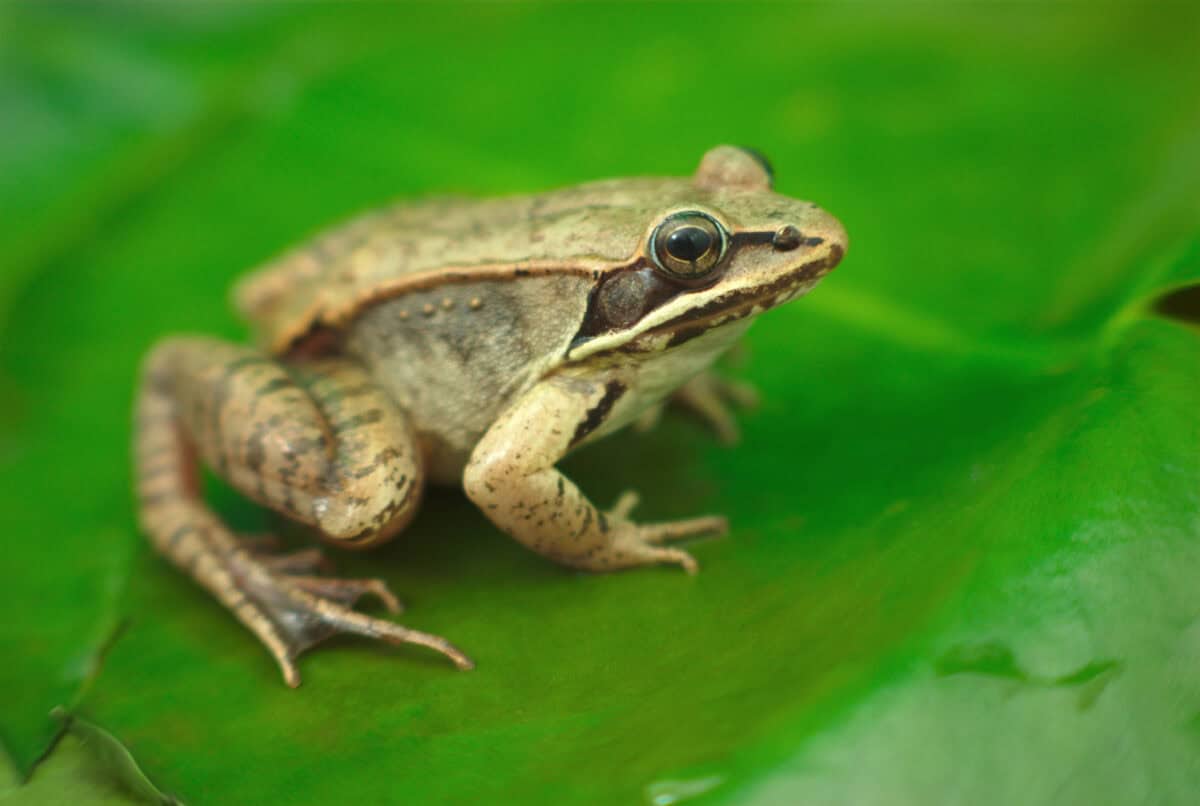
The wood frog’s ability to freeze solid and return to life represents one of nature’s most extraordinary adaptations to extreme environments. This remarkable phenomenon not only allows these small amphibians to thrive in regions where few other frogs could survive but also offers valuable insights for human medicine and technology. As climate change continues to alter our planet’s ecosystems, the resilience of species like the wood frog provides both inspiration and cautionary lessons about the limits of adaptation. Their unique physiology reminds us of nature’s incredible ingenuity and the countless biological mysteries that still await discovery in even the most unassuming creatures.
As researchers continue to unravel the molecular mechanisms behind freeze tolerance, the wood frog stands as a testament to life’s remarkable adaptability and the extraordinary solutions that can evolve in response to environmental challenges. From their glacier-edge habitats to potential applications in organ transplantation, these small frogs connect wilderness survival to cutting-edge science in ways that continue to astonish both biologists and the general public alike. The next time winter’s grip tightens and temperatures plummet below freezing, remember the humble wood frog—nature’s cryobiological miracle—waiting patiently beneath the snow for spring’s return and the chance to live again.
- What’s Lurking in the Waters of the Great Lakes (Yes, Really!) - August 20, 2025
- Bees Can Do Basic Math - August 20, 2025
- How Climate Change Is Bringing More Deadly Animals to the US - August 20, 2025

